Who Owns the Truth?
Wem gehört die Wahrheit?

ARS ELECTRONICA 2023
Festival for Art, Technology & Society

Wem gehört die Wahrheit?

ARS ELECTRONICA 2023
Festival for Art, Technology & Society
Ars Electronica 2023 Festival for Art, Technology, and Society
September 6 — 10, 2023 Ars Electronica, Linz
Editors: Gerfried Stocker, Markus Jandl
Editing: Mihaela Kavdanska, Maria Koller, Johanna Lenhart, Veronika Liebl, Philip Wolfsohn
Copyediting: Andrew Horsfield, Charlotte Eckler, Lisa Rosenblatt, Ingrid Fischer-Schreiber
Graphic design and production:
Main layout: Cornelia Prokop, Lunart Werbeagentur
Cover: Gerhard Kirchschläger
Typeface: IBM Plex Sans
Printed by: Gutenberg-Werbering Gesellschaft m.b.H., Linz
Paper: Arctic Volume white 1,12 vol., cover — 300g/m2, book core — 115g/m2
© 2023 Ars Electronica © 2023 for the reproduced works by the artists, or their legal successors © 2023 images without credit are courtesy of the artists © 2023 Hatje Cantz Verlag
Distribution worldwide by Hatje Cantz Verlag GmbH Mommsenstr. 27 10629 Berlin Germany www.hatjecantz.com A Ganske Publishing Group Company
ISBN 978-3-7757-5602-0
Printed in Austria
Cover:
Created with the AI-System DALL·E2.
Verdana ClimatePartner.com / 53401-2307-1022
ClimatePartner.com/53401-2678-0009 ClimatePartner.com/53401-2678-0009
Since 2002, Ars Electronica and the University of Arts Linz have joined forces to create an inspiring platform that showcases the talents of artists associated with international higher-education institutions pioneering innovative approaches to teaching media art and media culture. This annual event, known as Ars Electronica Campus, is more than just an exhibition; it embodies the spirit of exploration and discovery, inviting outstanding universities from around the globe to present their projects and reflect on their mission and creative endeavors. At the heart of the Campus format lies a profound commitment to exploring and visualizing diverse educational approaches in the realms of art and creativity. Through these showcases, we gain invaluable insight into the distinctive identities, histories, and contemporary practices of the invited guest universities. It is a unique opportunity to analyze and comprehend the evolving landscape of media arts and design education, where experimentation, collaboration and boundary-pushing are celebrated. The Campus Exhibition stands as a testament to the power of interdisciplinary exchange and international cooperation, fostering a vibrant community of artists, educators and enthusiasts who collectively shape the future of media art and culture. As we delve into the works presented by these exceptional institutions, we embark on a journey of discovery, celebration and mutual inspiration. This year, the University of Arts Linz celebrates its 50th anniversary with a special theme — Radical Collectives. In response to the festival question "Who owns the truth?", the University explores the activist potential of collectives, questioning and testing their role. The theme metaphorically signifies that the search for truth involves encountering a diversity of people and opinions,
ARS ELECTRONICA 2023
Festival for Art, Technology & Society
emphasizing negotiation and jointly discussing content over individual perspectives. By embracing diversity and collective approaches to resources, knowledge and skills, the University seeks to understand and address the many challenges of today and the future. In 2023, the Campus also places a special focus on the partner university in Taiwan, the Taipei National University of the Arts, whose exhibition, Epicentrum, fits perfectly with the University of Arts Linz's anniversary motto and the festival's theme. The exhibition reveals how organic and inorganic matter is interwoven and set in motion, drawing connections to Taiwan as an epicenter in a tense global situation and geologically positioned at the intersection of two tectonic plates.
The University of Arts Linz is also represented in the POSTCITY with the Interface Cultures exhibition, created by the students of the course with the same name. Under the motto "Resonating Selves," the exhibition delves into our interaction with the world, both real and digital, and the clash between subjective and objective reality.
At the Salzamt during the Ars Electronica Festival, contributions from another partner university, the Nanyang Technological University, Singapore (NTU), are showcased. The exhibition, subtitled The New Aesthetic of AI in Artistic Practice, explores how AI can foster creativity and change the way we create and experience art.
A total of 56 international universities working in the academic fields of media art, design and technology participate in the Ars Electronica Festival 2023. Through this collective endeavor, the Campus Exhibition celebrates the power of creativity, collaboration and exploration in shaping our shared future.
In his legendary Taoist anecdote on Butterfly Dreams, Zhuang-zi famously pondered whether he was a man dreaming he was a butterfly or a butterfly dreaming he was a man. At first impression, this might seem to be a question of what is real. However, this implies a favoring of one state over another. But both are dreams equally real (and unreal), oscillating between the ego and unconscious self. Such exchanges allow one to explore their inner self; in other words, the butterfly and man are both selves, from dreaming and awakening to wondering, transforming and melting between states.
Butterfly's Dreams: The New Aesthetic of AI in Artistic Practice alludes to the latent qualities of Machine Learning. It demonstrates how AI can be used to enhance creativity and innovation in artistic practice and the potential for AI to revolutionize how we create and experience art.
The works featured explore possible interchanges between dreams and provoke dialogues surrounding the role of machines in sense-making. The Exhibition comprises 11 works by 16 artists from the Interdisciplinary Media Design Program Pathway in Nanyang Technological University, School of Art, Design and Media and exchange students from the Global Innovation Design Program at the Royal College of Art and Imperial College London. This is the first time Singapore’s international collaborative multimedia will premiere at the Ars Electronica Festival.
Curators and Organization: Ina Conradi, Ong Kian Peng We wish to acknowledge the funding support for this project from Nanyang Technological University, School of Art, Design and Media, Institute of Science and Technology for Humanity, Goh Swee Chen NTU Board of Trustees, Chairman, National Arts Council, URECA Undergraduate Research Program, the IMDA iPREP Program, AVS Printing Pte Ltd.
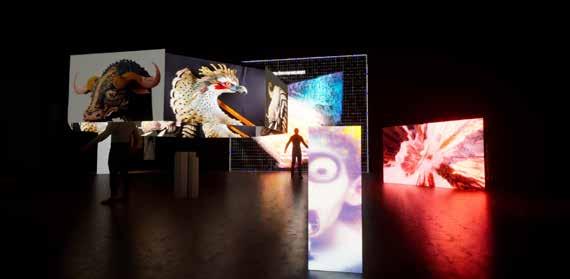

An AI generated immersive space that brings to life the Memories of Ming, an AI entity. Ming ( ) also means "tomorrow" in Chinese, symbolizes the near-existence of Ming and the spaces generated by it. They look like they can exist somewhere in the world, but not really, similar to those spaces stored deep in our memories that have become a syncretism of reality and our imagination. With Ming, we create a new world with a new image that has never existed before.

Cometale is an interactive installation that explores the relationship between comets and nature through the lens of AI art technology. Inspired by “Divination by Astrological and Meteorological Phenomena,” an ancient Chinese silk book that demonstrates the divination practice using astrology and meteorology, the installation consists of a scroll-shape projection screen displaying a series of interactable AI-generated synthetic comet animations, creating an immersive experience for the audience.

3 x 1 = 1 is an exhibition that delves into the profound impact of childhood experiences on our personalities. Using StableDiffusion, I created AI-generated imaginary friends based on childhood memories and experiences, brought to life as 3D models in virtual environments. These friends are not just figments of our imagination but an integral part of our personal development. Through this exhibition, I invite viewers to reflect on their own childhood experiences and appreciate the enduring impact of imagination and memory.
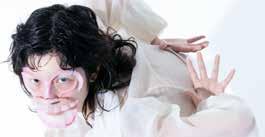
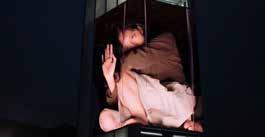
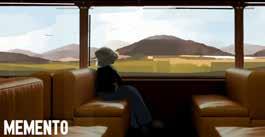
Solemn Creatures is a series exploring female identity and beauty in fashion with the grotesque charm of the posthuman visuals. Researched and developed in "Fashion Artifice"; a design project that explores the intersection of artificial intelligence, fashion, and posthumanism.
Showcased at Ten Square Singapore as a part of the 2023 ART-ACT Festival and Singapore Art Week, Box Body is a live interactive 3D performance of a giant inside a box on a curved billboard screen. It is made with a unique film-based production technique that can generate instantaneous anamorphic 3D visuals without the need for technical 3D modeling expertise. The work is inspired by themes of urban isolation and systemic constriction.
Memento is a collaborative animated film portraying the intricacies of our emotional lives by exploring the trappings of our personal memories. The film utilizes a train journey as a metaphor to depict the path of life and its trials, with characters personified to our core emotions making their entry and exit at each stop. This vivid portrayal underscores the fact that our being is a culmination of all past experiences and interactions.
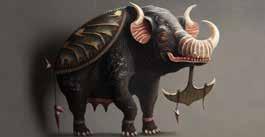
Through the integration of artificial intelligence into traditional shadow puppetry, Synthetic Beasts Unleashed speculates a future where bio-engineering has birthed unprecedented life forms. Immersing viewers into an artificial nature devoid of its original essence, this installation confronts humanity's audacious ability to manipulate nature and play the role of a divine creator. The artists compellingly prompt us to reassess our intricate connections with the ecosystems that sustain us.

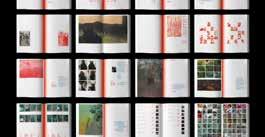

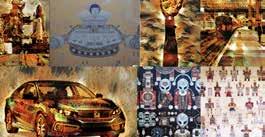
Memory Misprint(); surfaces the ethical complexities of artificial intelligence (AI) and critically reflects what it means to be human. The work utilizes generative models (GPT-2, VQGAN+CLIP, Deep Daze) to visualize memory distortion. Memory Misprint(); encourages viewers to indulge in a fictional mental space while reflecting on the reliability of their recollections.
Cog in the Machine is an experimental graphic novel that takes a posthuman approach to narrativity and design. The project lets themes of technology give answers about our place in the universe as humans, but also to raise questions contributing to the posthuman dialogue. It was produced in collaboration with opensource artificial intelligence models: Generative Pre-trained Transformer Vr. 2 (GPT-2) by OpenAI (AttnGAN).
Feedback* is an experimental audiovisual toolkit within Touchdesigner for live performances to work with AI models. The project aims to create a collaborative environment between AI and performers in a real-time context. The piece shown in this exhibition works with the effects of global warming and its impact on corals, oscillating between speculation and observed phenomenon and between performer and AI.
A.I. Grotto examines the relationship between AI-generated art, craftsman spirit and ancient heritage sites. It contemplates the coexistence of AI and the spirit of craftsmanship in the future. Inspired by ancient Dunhuang Cave Murals, AI-generated models learn and transform contemporary news and photographs into the Dunhuang style, blending ancient art with modern content in a modernized documentation approach.
Over the past four decades, a number of pioneers have turned Ars Electronica into a creative ecosystem that now enjoys a worldwide reputation.
The following section provides a stunning insight into this ever-evolving ecosystem.
Since 1979 we celebrate once a year the Ars Electronica Festival . More than 1,000 artists, scientists, developers, designers, entrepreneurs and activists are coming to Linz, Austria, to address central questions of our future. For five days, everything revolves around groundbreaking ideas and grand visions, unusual prototypes and innovative collaborations, inspiring art and groundbreaking research, extraordinary performances and irritating interventions, touching sounds and rousing concerts.
Since 1987 we have been awarding the Prix Ars Electronica every year. With several competition categories, we search for groundbreaking projects that revolve around questions of our digital society and rehearse the innovative use of technologies, promising strategies of collaboration and new forms of artistic expression. The best submissions will receive a Golden Nica, considered by the global media art scene to be the most traditional and prestigious award ever.
Since 1996 we have been working at the Ars Electronica Center year after year with tens of thousands of kindergarten children, pupils, apprentices and students on questions concerning the ever-increasing digitalization of our world. The focus is on the potential of the next Game Changer: Artificial Intelligence.
Also since 1996 we operate the Ars Electronica Futurelab , whose international and interdisciplinary team of artists and scientists is researching the future. With interactive scenarios, we prepare central aspects of the Digital Revolution for the general public in order to initiate a democratic discourse.
1998 we initiated create your world. The year-round programme is developed together with young people and includes a competition for under 19 year olds, a festival of its own and a tour through the region. We see create your world as an invitation and challenge at the same time and want
ARS ELECTRONICA 2023
Festival for Art, Technology & Society
to encourage young people to leave the role as mere users of technology behind, to discover new possibilities of acting and designing and to implement their own ideas.
2004 we started Ars Electronica Export with a big exhibition in New York. Since then we have been to Abuja, Athens, Bangkok, Beijing, Berlin, Bilbao, Brussels, Buenos Aires, Doha, Florence, Kiev, London, Madrid, Mexico City, Moscow, Mumbai, Osaka, Sao Paulo, Seoul, Shanghai, Singapore, Tokyo, Tunis, Venice and Zaragoza. Together with partners from art and culture, science and education, business and industry, we organize exhibitions and presentations, conferences and workshops, performances and interventions at all these locations.
Since 2013 our team at Ars Electronica Solutions has been developing market-ready products inspired by visions and prototypes from the artistic cosmos of Ars Electronica. We develop innovative, individual and interactive products and services for exhibitions, brands, trade fairs and events.
Since 2016 we are active all year round in Japan. Especially in Tokyo and Osaka we work together with leading Japanese universities, museums and companies, develop and present artistic projects, design workshop series and Open Labs and dedicate ourselves to the future of our digital society in conferences.
In order to actively shape the digital revolution, people are needed who have a feel for change and recognize connections, develop new strategies and set a course. This is precisely where the 2019 created Future Thinking School aims to support companies and institutions.
Whether at home in the living room or in the office, whether in the classroom or in the lecture hall, in the streetcar or subway, on the train — from everywhere Home Delivery accompanies our virtual visitors on an artistic-scientific journey into our future since 2020.
All our activities since September 18, 1979 have been documented in the form of texts, images and videos and stored in the Ars Electronica Archive . This archive provides us with a unique collection of descriptions and documentations of more than 75,000 projects from four decades of Ars Electronica.

In 1996 — at a time when schools were not yet connected to the Internet and computers were rarely available — the Ars Electronica Center laid the foundation for 21stcentury didactics with the “Electronic Classroom” designed by Prof. Max Mühlhäuser and his team. With its 16 broadband networked workstations, interactive Smart Boards and own video conferencing system, this “electronic classroom” was a great attraction at the time and for many years the first and often only docking point to the digital age. And in many cases, this digital classroom became the regular place of instruction for a wide variety of subjects.
In 2009, with the opening of the “expanded” new Ars Electronica Center, a platform for creative research and development was created. A space in which and with which artists and scientists,
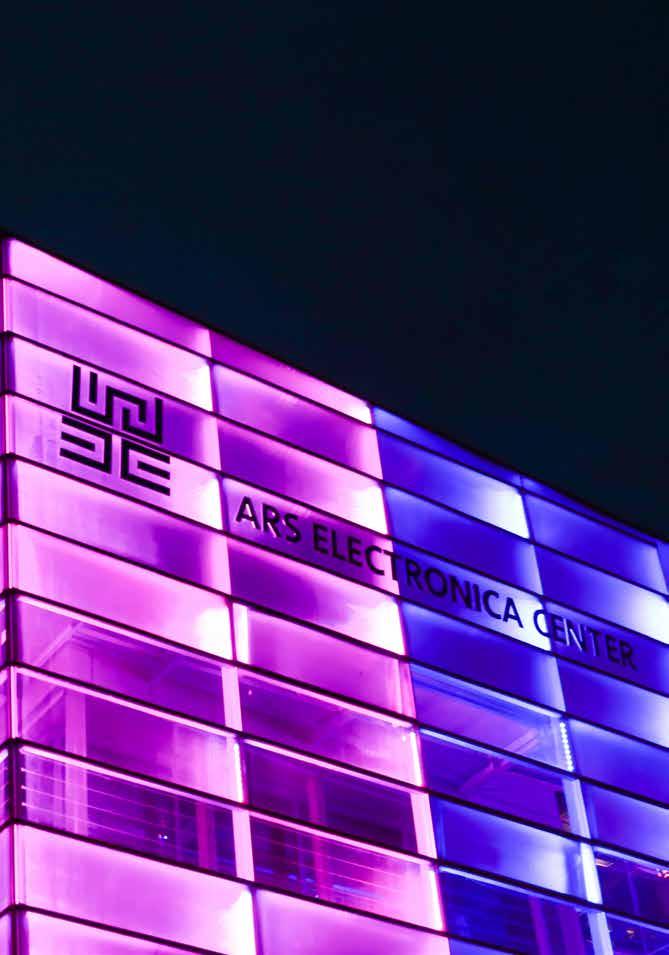
pupils and students, parents and children could experiment, work and play. Focus laboratories and interactive installations not only make available new technology, but also the concrete question: What does all this mean for me and my life?
Even though the building was expanded in terms of content and structure, the fundamental mission of the Center has remained unchanged: As before, the focus is on the vital and controversial questions of the future. Attention is never focused solely on art, technology or society, but always on the changes and interactions between them. For almost 45 years, Ars Electronica has lived out this insatiable curiosity for the “in-between”. A curiosity that is always different and unexpected. But always understood as both with and for the public.
Ars Electronica 2023 aims directly at key disputed topics of our time: truth and ownership, interpretive authority and sovereignty. Can truth be owned? Is there a right to truth and, if truth does belong to someone, what control and responsibility are associated with it? How do we ask ourselves such questions in this age of global interconnectedness and the rapidly developing performance of so-called Artificial Intelligence? In Ars Electronica’s own inimitable fashion, artists, scientists, developers, designers, entrepreneurs, and activists from all over the world are invited to discuss these questions. Once again, Europe’s largest festival for art, technology and society becomes a platform for projects arising from the many local, European, and international cooperations and networks, the curated theme-based exhibition and newly commissioned works, concerts and performances, symposia and workshops.
https://ars.electronica.art/who-owns-the-truth/en/